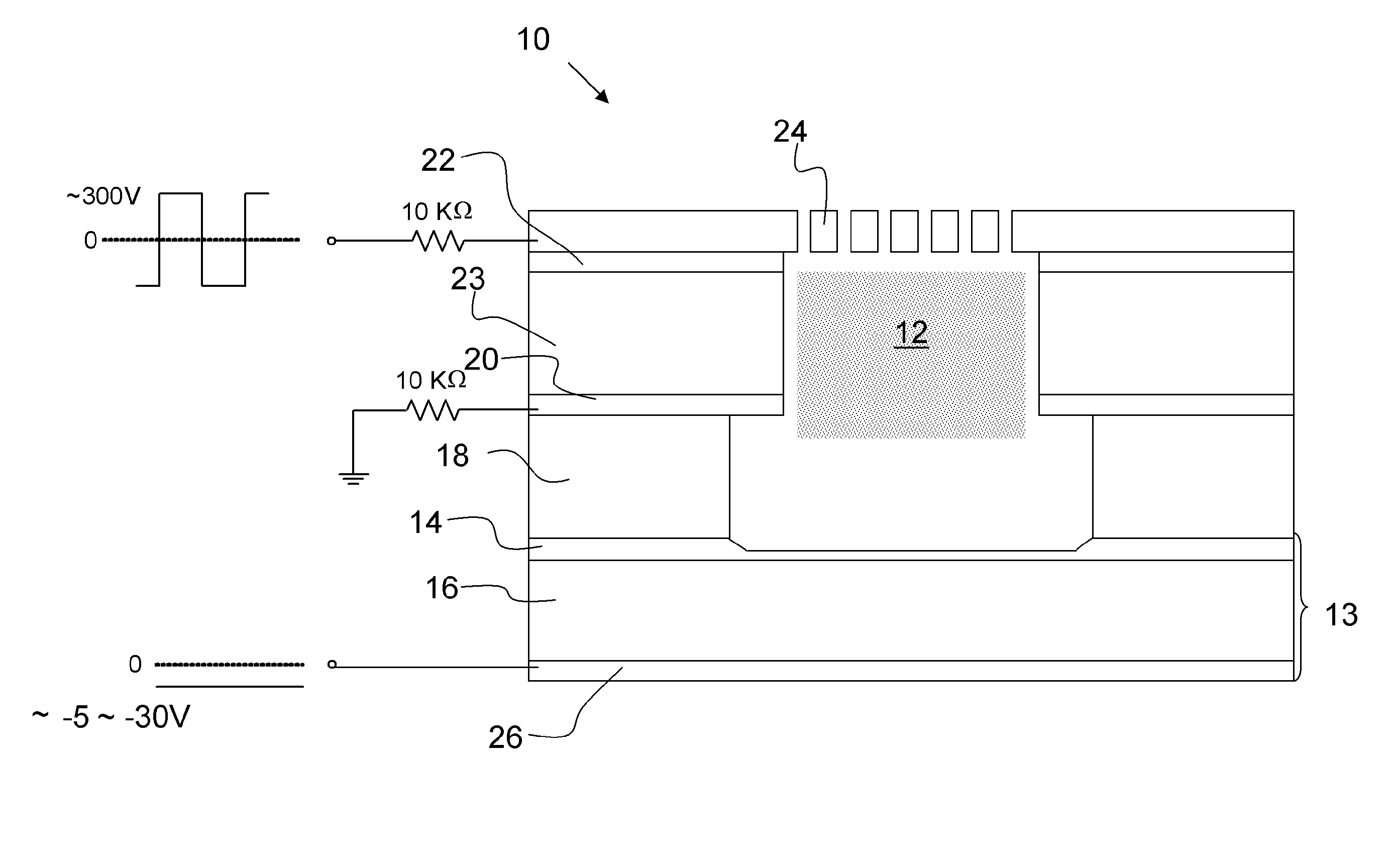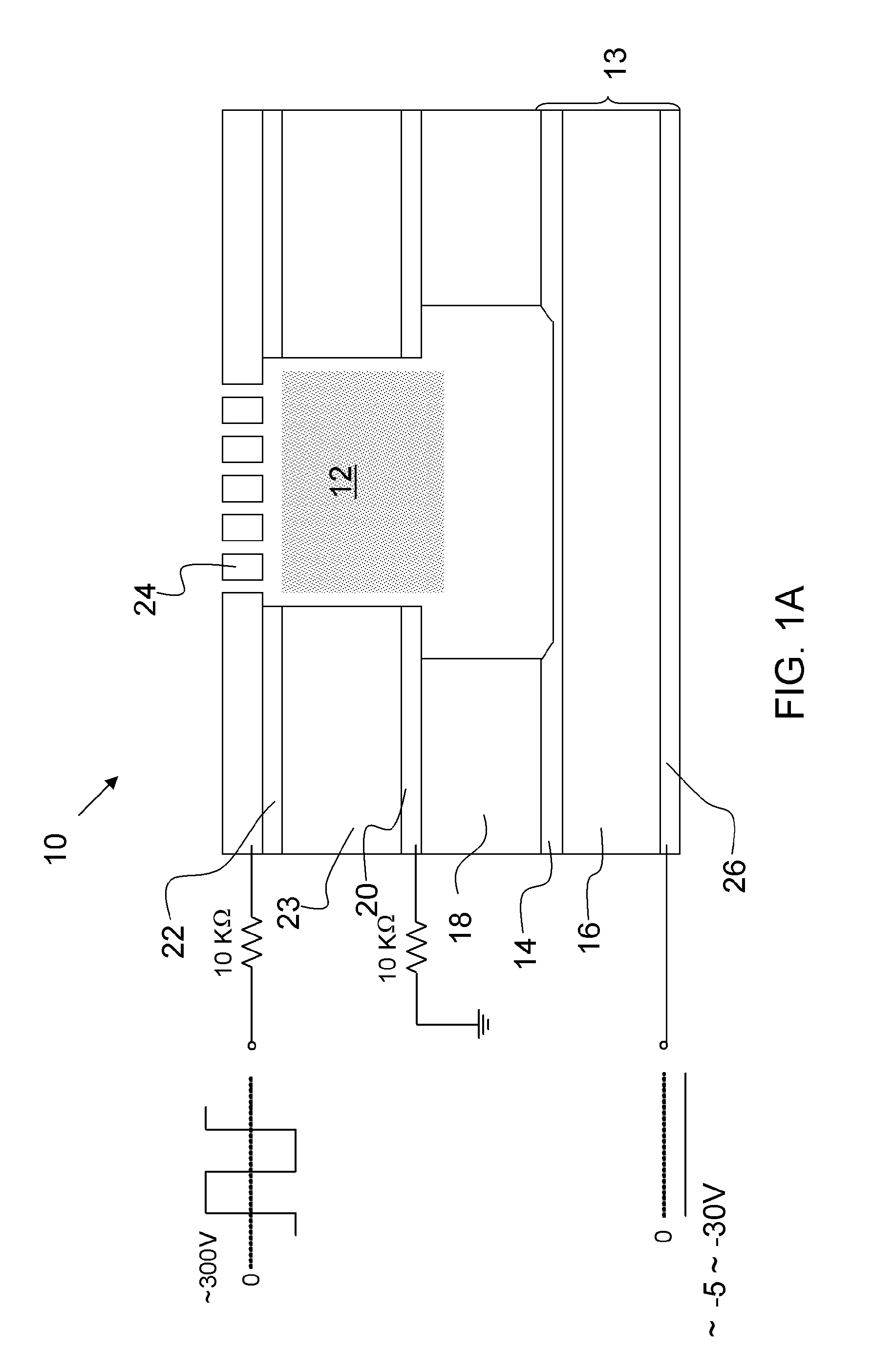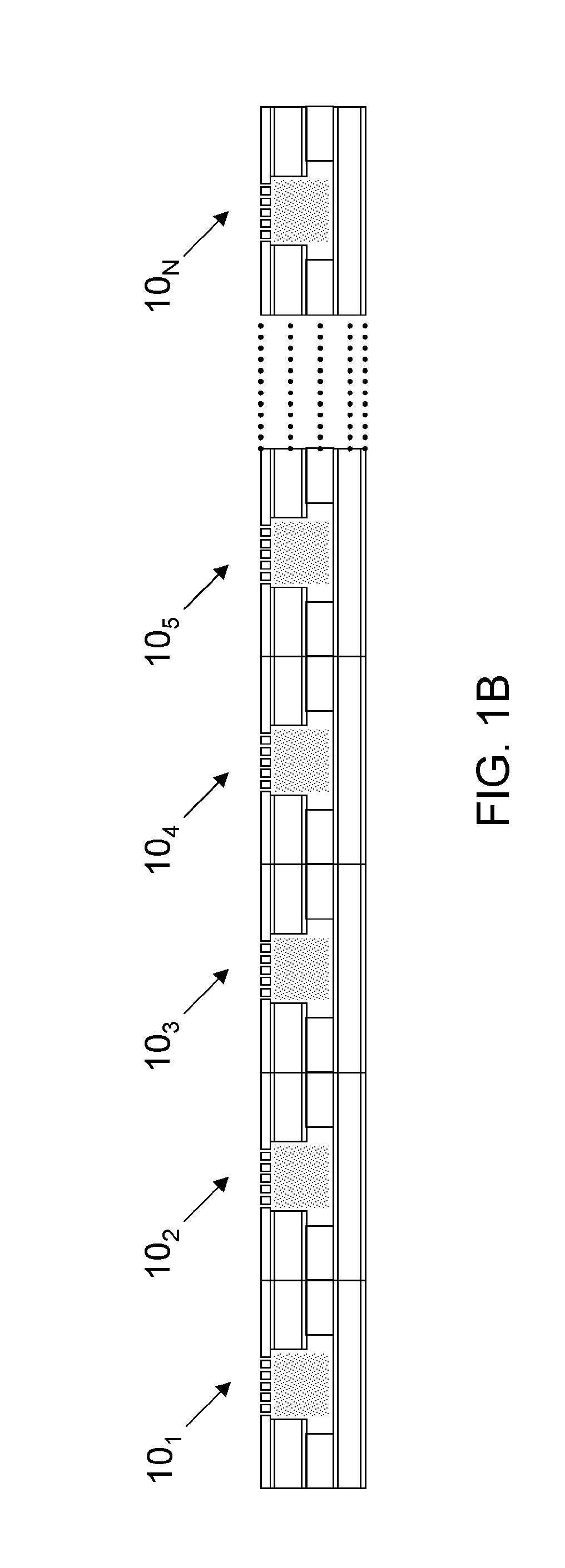Electron injection-controlled microcavity plasma device and arrays
- Summary
- Abstract
- Description
- Claims
- Application Information
AI Technical Summary
Benefits of technology
Problems solved by technology
Method used
Image
Examples
Embodiment Construction
[0013]Microcavity plasma devices and arrays of the invention are modulated by a controllable electron emitter requiring a substantially smaller voltage than that applied across a microcavity in the device or array to generate a plasma. A driving voltage is applied across microcavity plasma devices while a small control voltage is applied to one or more electron emitters that inject electrons into the microcavity of a device. The effect of electron injection into a microplasma is to increase both the conductance current and light emitted by the plasma. While a voltage comparable to previous microcavity plasma devices is still imposed across the microcavity plasma devices, control of the devices can be accomplished at high speeds and with a small voltage, e.g., about 5V to 30V in preferred embodiments.
[0014]An embodiment of the invention is a microcavity plasma device that can be controlled by a low voltage electron emitter. The microcavity plasma device includes driving electrodes di...
PUM
 Login to View More
Login to View More Abstract
Description
Claims
Application Information
 Login to View More
Login to View More - R&D
- Intellectual Property
- Life Sciences
- Materials
- Tech Scout
- Unparalleled Data Quality
- Higher Quality Content
- 60% Fewer Hallucinations
Browse by: Latest US Patents, China's latest patents, Technical Efficacy Thesaurus, Application Domain, Technology Topic, Popular Technical Reports.
© 2025 PatSnap. All rights reserved.Legal|Privacy policy|Modern Slavery Act Transparency Statement|Sitemap|About US| Contact US: help@patsnap.com



